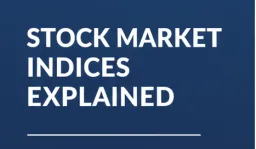Trend Trading – A detailed Guide

If you’re an experienced trader looking to add another strategy to your arsenal, trend trading might be the perfect fit. It offers a number of advantages, from lower risk to consistent returns on your investments over time. Whether you’re just getting started in trend trading or you’re an experienced investor looking to expand your knowledge base. This guide will provide you with all the information you need to know. From understanding different types of trend trading strategies and when to use them, to spotting potential risks and rewards associated with them—we cover it all here.
What is Trend Trading?
Trend trading is a marketing strategy that employs a variety of marketing indicators to help identify an asset’s momentum in a particular direction. When the price moves in one direction, such as upward or downward, this is referred to as a trend.
Several traders employ trend trading strategies because the trading market has an element of predictability that allows traders to analyze and exploit it. A trader can forecast and analyze trading based on a variety of factors such as previous performance, price movements, historical trends, and more.
Trend traders typically attempt to accumulate profits by analyzing the asset’s momentum in a particular direction. A trend is formed when the price of an asset rises and falls. When a security is trending upward. A trend trader will likely take a long position to capitalize on the asset’s large advantage.
Read our article on 7 Biggest mistakes to avoid while doing Intraday Trading.
What are the different types of trends?
Trend trading strategies are important in the lives of all traders because they help them identify early trades to exit the stock market when there is a reverse trend. Trends are classified into three types, as shown below:
- Uptrend – When the value of a trade’s stock price rises, an uptrend is formed. When the market opens, several traders capitalize on an uptrend and enter a long position in order to achieve high price levels.
For example, if the share price of a particular company rises by Rs.30, falls by Rs.15, and then rises again by Rs.20. The share price is on an upward trend, as evidenced by higher highs and lower lows in price.
- Downtrend – When the stock price falls, a trader can identify a downtrend. In the case of a downtrend, trend traders make their way and enter a short position when the price is at its lowest point.
For example, if the stock price falls by Rs. 60, then rises by Rs. 30, and then falls again by Rs. 20, a trader will notice a formation in a downward trend. However, it is evident in a downtrend by lower highs and lower lows in the stock price.
- Sideways trend – When the market remains static, i.e., the stock price does not reach the highest or lowest price points, a sideways trend develops.
Several professional traders who trade trends ignore this sideways trend. Scalpers, on the other hand, benefit from short-term market investments to capitalize on a sideways trend.
What are the types of Trend trading strategies?
We now understand what trend trading is and how it works. Let’s take a look at some of the strategies that many traders employ to identify trends.
The MACD Trading Indicator
To assist traders in identifying trends. The Moving Average Convergence Divergence (MACD) indicator calculates the average price of a security over a given timeframe. Because several traders enter a long position at a specific timeframe where a short-term moving average exceeds a longer-term moving average. This is the most effective trend trading strategy.

However, if the short-term moving average crosses below the longer-term moving average, traders can enter a short-term position. Moving average trends are typically combined with other types of technical analysis to filter out signals and determine a trend. Moving averages also play an important role in trend analysis.
For example, if the security price is higher than the moving average, it indicates that the stock price is rising. If, on the other hand, the security price is below the moving average, it indicates a stock price downtrend.
The RSI Trading Indicator
The Relative Strength Index indicator is a strategy that helps to identify stock price momentum as well as overbought and oversold signals.
This is accomplished by examining the average profits and losses over a specific time period, say 14 days, and determining the positive and negative movement in the stock price.
The RSI is displayed as a percentage that ranges from 0 to 100 on a scale. When the indicator moves from 70 to 30, the market is said to be overbought or oversold. Trend traders typically use these levels as indicators that a trend is approaching maturity.
The ADX indicator
To identify and analyze trends, trend traders use the Average Directional Index or ADX momentum trend trading strategies.
The ADX indicator assists traders in measuring their own strength and estimating the price strength of a security in both positive and negative directions.
The ADX indicator’s line moves between zero and 100. If the indicator displays values ranging from 25 to 100, it indicates a strong trend. Whereas values less than 25 indicate a weak trend.
Follow us Instagram.









